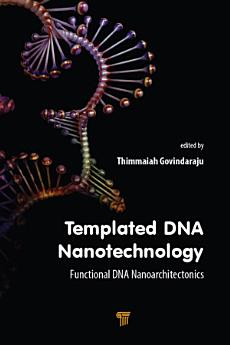Templated DNA Nanotechnology: Functional DNA Nanoarchitectonics
Kuhusu kitabu pepe hiki
This book discusses novel approaches adapted by leading researchers from all over the world to create functional nucleic acid molecular systems and nanoarchitectures. Individual chapters contributed by active practitioners provide fundamental and advanced knowledge emanated from their own and others’ work. Each chapter includes numerous illustrations, historical perspectives, case studies and practical examples, critical discussions, and future prospects. This book can serve as a practical handbook or as a textbook for advanced undergraduate- and graduate-level students of nanotechnology and DNA nanotechnology, supramolecular chemistry, and nanoarchitectonics and researchers working on macromolecular science, nanotechnology, chemistry, biology, and medicine, especially those with an interest in sensors, biosensors, nanoswitches and nanodevices, diagnostics, drug delivery, and therapeutics.
Kuhusu mwandishi
Thimmaiah Govindaraju is professor at the Bioorganic Chemistry Laboratory, Jawaharlal Nehru Centre for Advanced Scientific Research, Bengaluru, India. He received his MSc in chemistry in 2000 from Bangalore University, India, and PhD in chemistry in 2005 from the National Chemical Laboratory and the University of Pune, India. From 2005 to 2006, he pursued his postdoctoral research at the University of Wisconsin–Madison, USA, and from 2006 to 2008 the Alexander von Humboldt fellowship at the Max Planck Institute of Molecular Physiology, Dortmund, Germany. Dr. Govindaraju has published more than 90 papers in peer-reviewed journals and several book chapters and holds more than 10 patents. Many of his laboratory inventions have been commercialized or licensed to develop bioimaging and point-of-care diagnostics. He is also cofounder of a start-up company, VNIR Biotechnologies Pvt. Ltd. He has received awards such as "India’s Young Blood" by Chemical and Engineering News, ACS, USA, and the Sir C. V. Raman Young Scientist Award by the government of Karnataka (2014). He is also secretary of the Chemical Research Society of India (CRSI) and the Indian Peptide Society (IPS). His research interests are at the interface of chemistry, biology, and (bio)materials sciences and include Alzheimer’s disease (disease amyloids), peptide chemistry, molecular probes, molecular architectonics,




